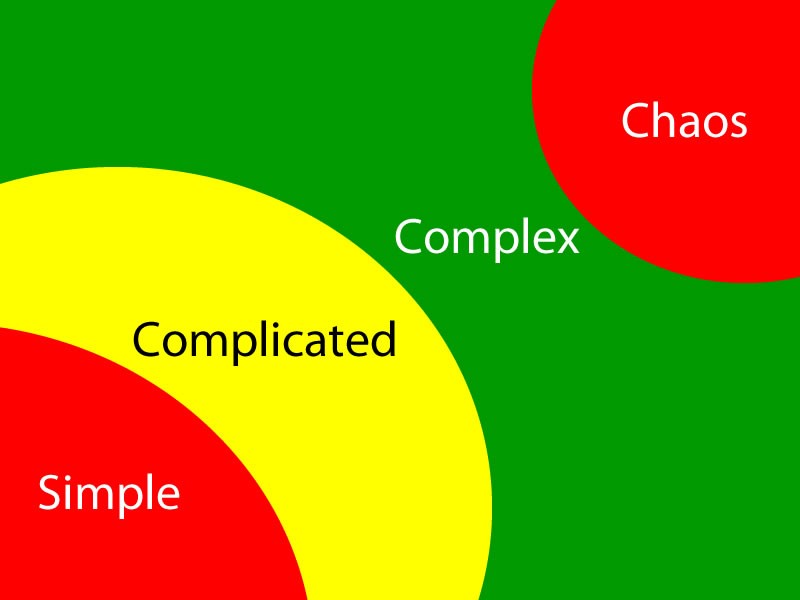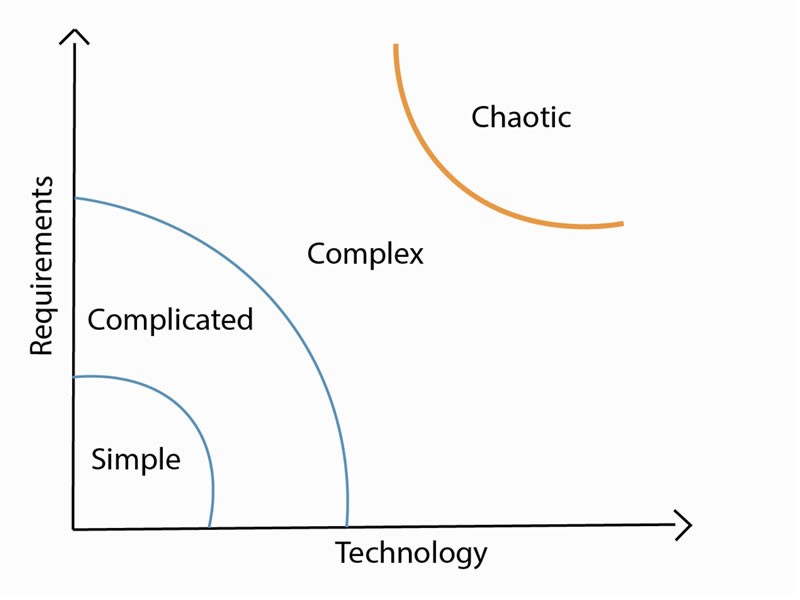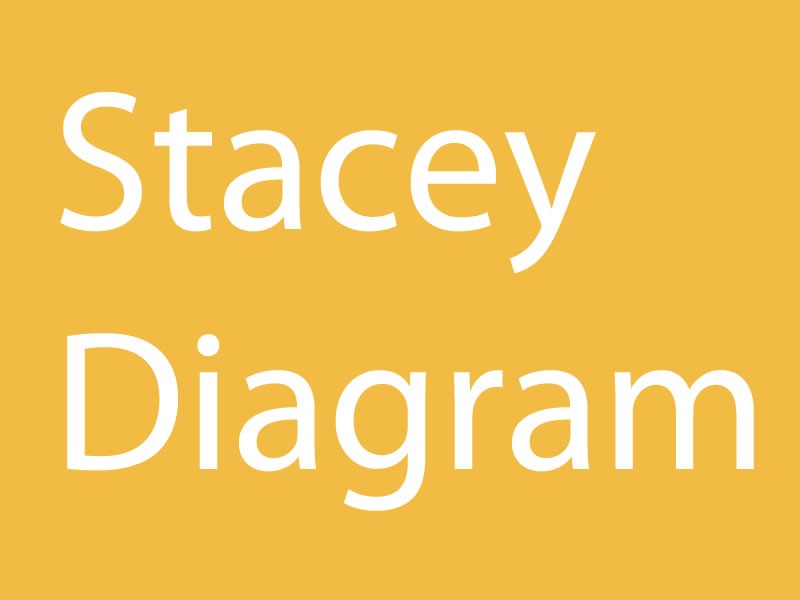Insight Blog
Agility’s perspectives on transforming the employee's experience throughout remote transformation using connected enterprise tools.
15 minutes reading time
(3072 words)
Understanding The Stacey Matrix & How It Helps Manage Complexities
Explore the Stacey Matrix, a key tool for managing organizational complexities and enhancing decision-making strategies.
The Stacey Matrix is a pivotal tool for understanding and managing complexities within organizational environments.
The Stacey Matrix, created and introduced by Ralph Douglas Stacey as mentioned on the stacey matrix wikipedia page, serves as a tool for comprehending the elements influencing complexity and determining optimal management strategies based on varying degrees of complexity. Although it wasn't originally tailored for project delivery, its applicability to this domain is as pertinent as in any other context.
Originating from the field of management and organizational theory, this matrix provides a framework for categorizing problems based on their level of complexity and the degree of consensus. In modern business scenarios, where unpredictability and rapid change are the norms, the ability to navigate through complex issues is crucial.
The Stacey Matrix steps in as a guide to assist leaders and managers in identifying the nature of the challenges they face.
By classifying problems into categories such as 'simple', 'complicated', 'complex', and 'chaotic', the matrix offers clarity on the approach needed for effective decision-making. This categorization is particularly beneficial in environments that are dynamic and uncertain, enabling a more nuanced understanding of the situation at hand.
Projects approach a state of certainty when well-known cause-and-effect relationships exist, and similar projects have been executed in the past. In such cases, leveraging past experiences allows for predictions about the outcome of a new project, with techniques like parametric and analogous estimating relying on this knowledge.
In contrast, projects that deviate from certainty involve delivering something novel and innovative, often introducing concepts new to the hosting organization. In these instances, cause-and-effect relationships are typically unclear, and past experiences provide limited guidance for planning.
Within a group, team, or organization, there will be divergent perspectives on the project's objectives and the means to achieve them. The governance structure, management style, and project management approach will vary based on the level of consensus among stakeholders.
As a result, the Stacey Matrix is not just a theoretical model but a practical tool that aids in the strategic management of complexities in various organizational settings.
Understanding The Stacey Matrix: What It Means?
Definition and Origins of the Stacey Matrix
The Stacey Matrix, developed by Professor Ralph Stacey in the early 1990s, is a framework designed to aid in the understanding and management of organizational complexity. This matrix emerged from Stacey's work in complexity and management theory, addressing the challenges organizations face in uncertain and dynamic environments.
It distinguishes problems based on their level of complexity and agreement, guiding managers in choosing appropriate strategies.
As a revolutionary tool, it shifted the focus from traditional linear management models to ones that accommodate ambiguity and unpredictability, reflecting real-world business scenarios more accurately.
The Theoretical Underpinnings of the Matrix
At its core, the theoretical foundation of the Stacey Matrix is rooted in complexity theory and the dynamics of organizational behavior.
The matrix integrates concepts from these fields to create a multidimensional space where decision-making scenarios can be plotted.
This theoretical approach acknowledges that organizations operate in environments that are often volatile and ambiguous, necessitating adaptive and flexible strategies.
By incorporating elements of chaos theory and non-linear dynamics, the Stacey Matrix offers a more realistic and nuanced framework for understanding how organizations can navigate and thrive in complex, uncertain situations.
Components of the Stacey Matrix
The Stacey Matrix comprises two critical components: the axes of certainty and agreement.
The certainty axis represents the extent to which an organization can predict outcomes, while the agreement axis indicates the level of consensus among stakeholders.
These axes intersect to form a matrix with four quadrants, each representing different degrees of complexity and uncertainty in organizational situations. This structure allows managers to categorize problems and opportunities, enabling them to tailor their strategies according to the specific characteristics of each scenario.
The matrix thus serves as a practical guide for decision-making in diverse organizational contexts.
Follow us and access great exclusive content everyday: Follow us on Google News
Certainty and Agreement Axes
The certainty and agreement axes are fundamental to the Stacey Matrix. The certainty axis spans from high certainty, where outcomes are predictable, to complete uncertainty, where outcomes are unknown. The agreement axis, on the other hand, ranges from full consensus among stakeholders to complete disagreement.
These axes intersect to create a spectrum of scenarios, each requiring different management approaches. High certainty and agreement indicate straightforward problems, whereas low certainty and agreement denote complex, unpredictable challenges. Understanding these axes is crucial for leaders to effectively assess situations and apply the most appropriate decision-making and management strategies.
Different Zones of the Matrix
Within the Stacey Matrix, the intersection of the certainty and agreement axes results in four distinct zones: simple, complicated, complex, and chaotic. The 'simple' zone represents problems with high certainty and agreement, suitable for standard solutions. 'Complicated' scenarios have clear solutions but require expertise due to their complexity.
The 'complex' zone, characterized by uncertainty and disagreement, demands innovative and adaptive approaches.
Lastly, the 'chaotic' zone, marked by high uncertainty and low agreement, requires immediate, decisive actions to stabilize the situation. Each zone challenges managers to apply specific strategies and skills to navigate the organizational landscape effectively.
Advantages and Disadvantages of Using The Stacey Matrix in Consulting
Leveraging the Stacey Matrix in consulting predominantly aims to visually represent the current problem. This entails both benefits and drawbacks when employing it during a case interview, with the client, or within various projects:
Advantages
- Visual Simplicity: The Stacey Matrix can be swiftly hand-drawn, providing a visual representation on a flip chart or paper, making it accessible for stakeholders to comprehend the situation effortlessly.
- Early Project Evaluation: All stakeholders gain the opportunity to assess a project before its commencement, enabling the early identification of potential challenges and frustrations that may arise.
- Proactive Issue Revelation: Early revelation of challenges and responsibilities facilitates proactive management, influencing decisions related to personnel and other critical aspects of the project.
- Structured Decision-Making: The matrix's division into 'What' and 'How' offers a systematic approach, allowing for a clear structure in argumentation and decision-making processes. This clarity aids in effective project planning and execution.
Disadvantages
In real-world application, the determination of 'What' is typically attributed to higher management, while the 'How' is not as clearly defined. This asymmetry in decision-making can pose challenges in achieving a comprehensive classification of the project.
The Stacey Matrix, unfortunately, does not offer specific hints or approaches to address the identified problem. Furthermore, the subjective nature of project evaluation, influenced by participants' varying levels of experience, can lead to disparate assessments.
It's essential to note that the matrix serves as a model, lacking consideration for real-world conditions such as the project environment, available resources, and time constraints. This oversight can impact the matrix's applicability in diverse project scenarios.
Depending on how it is employed, the Stacey Matrix runs the risk of being instrumentalized for self-serving purposes. Instead of adapting the approach to the project's unique demands, there's a tendency to shape the project to fit a preconceived approach. This potential misalignment raises concerns about the practical effectiveness and adaptability of the matrix in dynamic project environments.
You may also like: Best Apps for Employees: UPDATED 2022 – A Complete Guide
The Stacey Complexity Matrix
The Stacey Complexity Model offers a nuanced approach to understanding and managing organizational challenges by categorizing them into four distinct zones: simple, complicated, complex, and chaotic.
Each zone is defined by the degree of certainty and agreement present in a given situation, providing a framework for identifying the nature of problems and the most effective strategies for addressing them.
Here are some stacey matrix examples:
Simple Zone
This zone is characterized by high certainty and agreement. Problems here are well-understood and predictable, often routine or recurring in nature. Solutions are straightforward, well-established, and can be implemented through standard operating procedures. In this zone, management is typically focused on efficiency and consistency, utilizing best practices and established guidelines to handle these predictable challenges.
Complicated Zone
In the complicated zone, while there is still a high level of certainty, the level of agreement is lower. Problems here are more complex and may require specialized knowledge or expertise to solve. These situations often involve multiple variables or sophisticated processes, necessitating detailed analysis and planning. Decision-making in this zone relies on expertise, data analysis, and structured methodologies to find solutions that are not immediately apparent but are discoverable through investigation and expertise.
Complex Zone
The complex zone is marked by low certainty and low agreement. Challenges in this zone are often dynamic, unpredictable, and without clear solutions. They require innovative thinking and adaptive approaches. Leadership in this context involves facilitating dialogue, exploring various perspectives, and experimenting with different solutions to navigate through uncertainty. This zone demands flexibility, open-mindedness, and the ability to learn and adapt quickly as situations evolve.
Chaotic Zone
Situations in the chaotic zone are highly uncertain and lack agreement. They are typically crisis scenarios or novel problems where immediate action is needed. Traditional approaches and expertise may not be applicable, requiring leaders to make rapid decisions with limited information. The focus here is on stabilizing the situation and seeking novel approaches to establish order and move the situation into one of the other zones.
Thus, the Stacey Complexity Model is instrumental in categorizing organizational problems, providing a clear framework for understanding the nature of challenges and tailoring management strategies accordingly. By accurately identifying the zone in which a problem resides, leaders can more effectively apply the appropriate tools and approaches for successful resolution.
Political Zone
Managers play a crucial role in establishing an environment where key stakeholders can collaboratively identify areas of agreement. This involves providing opportunities for negotiation and dialogue, enabling stakeholders to find compromises and identify a mutually beneficial path forward. In political contexts, the optimal solution is one that satisfies the interests of all stakeholders.
Free ebook: How To Get Your Intranet Off The Ground
Using The Stacey Matrix in Agile
The Stacey Matrix Agile methodology provides a valuable framework for decision-making and project management in dynamic environments. Its relevance in Agile methodologies lies in its ability to classify projects based on complexity and uncertainty, which aligns well with Agile's emphasis on adaptability and iterative progress. By applying the Stacey Matrix in Agile project management, teams can more effectively assess the nature of their work and choose the most appropriate Agile practices.
In Agile environments, projects often vary in their level of complexity and uncertainty.
The Stacey Matrix helps Agile teams to categorize these projects into simple, complicated, complex, or chaotic. For instance, projects in the 'simple' zone can be managed with straightforward Agile practices, while those in the 'complicated' zone may require more planning and expert input. Projects falling into the 'complex' zone benefit from Agile's iterative approach, allowing for flexibility and continuous learning. The 'chaotic' zone, though less common in Agile, requires rapid responses and quick pivots, something Agile methodologies are well-equipped to handle.
There are numerous case studies that demonstrate the effectiveness of the Stacey Matrix in Agile projects. For example, a software development team might use the matrix to determine whether a project requires a more structured Scrum approach (suitable for 'complicated' projects) or a more adaptive Kanban style (effective for 'complex' projects). Another example could be an Agile marketing team assessing the complexity of a campaign to decide between a highly iterative approach or a more defined strategy.
However, using the Stacey Matrix in Agile environments also presents challenges. It requires teams to accurately assess the complexity and agreement levels of a project, which can be subjective. Moreover, the dynamic nature of Agile projects means that their categorization on the matrix can change over time, necessitating continuous reassessment and adaptation.
Despite these challenges, the Stacey Matrix remains a powerful tool in Agile project management. Its ability to guide teams in choosing the most effective Agile practices based on the specific characteristics of each project enhances the flexibility and responsiveness that are central to Agile methodologies.
Download Stacey diagram pdf below.
Stacey Diagram Examples
The Stacey Diagram provides a visual representation of the Stacey Matrix, illustrating the relationship between the degree of certainty and agreement within organizational problems. Typically depicted as a two-dimensional grid, the diagram plots certainty on one axis and agreement on the other, dividing the space into four quadrants representing the simple, complicated, complex, and chaotic zones. This visual tool is instrumental in enabling managers to quickly assess and categorize challenges, facilitating more effective decision-making.
Analyzing different Stacey Diagrams reveals how various organizational problems can be mapped and understood.
For example, a diagram used in a manufacturing context might show operational issues like production scheduling in the 'simple' quadrant, while research and development challenges could fall into the 'complex' quadrant due to their unpredictable nature. In contrast, a diagram for a software development company might place coding tasks in the 'complicated' quadrant, requiring specialized knowledge but with a high level of certainty, and user experience design in the 'complex' zone, where outcomes are less predictable and consensus is harder to achieve.
Real-world examples and case studies further illustrate the practical application of the Stacey Diagram. A notable instance could be a global marketing campaign, plotted in the 'complex' quadrant, where varying consumer behaviors and market responses create uncertainty and lack of consensus.
Another example is crisis management in a large corporation during unexpected events, like a cybersecurity breach, which would be categorized in the 'chaotic' zone, requiring immediate and decisive action with limited information.
Interpretation of these examples provides valuable insights. Organizations using the Stacey Diagram can tailor their management approaches, resources, and strategies according to the specific nature of the challenges they face. The diagram helps in recognizing the need for different leadership styles and decision-making processes in each quadrant.
For instance, a highly structured approach might work well in the 'simple' zone, while a more collaborative and exploratory approach is necessary in the 'complex' zone. These insights underscore the versatility and practical utility of the Stacey Diagram in diverse organizational contexts, aiding leaders in navigating the complexities of modern business environments.
Who Is Ralph Stacey & What Are His Contributions To Organizational Theory?
As mentioned above Ralph Stacey stands out as a pivotal figure in the field of management science, known for his innovative contributions to organizational theory.
Stacey, a South African-born management thinker and Professor at the University of Hertfordshire, made significant strides in understanding the complexities and uncertainties in organizational behavior. His academic and professional journey, which includes extensive research and teaching in the realms of management and organizational studies, led to groundbreaking ideas that have reshaped modern management thought.
Among Stacey's key contributions is the Stacey Matrix, a tool designed to help managers understand and navigate the complexities and uncertainties inherent in organizational life. This matrix, a cornerstone in his contributions, categorizes problems based on the level of agreement and certainty, offering a pragmatic approach to decision-making in different organizational contexts. His work emphasizes the non-linear dynamics of organizational change, challenging traditional, linear approaches to management.
The development of the Stacey Matrix is set against the backdrop of the early 1990s, a period marked by rapid changes in business environments and an increasing recognition of the complexities in organizational systems. Stacey, drawing from complexity theory and his observations of organizational patterns, proposed the matrix as a means to understand the varying degrees of complexity and predictability in organizational situations.
This was a significant departure from the prevailing management theories that often oversimplified the nuances of organizational dynamics.
Applying the Stacey matrixEnter heading here...
The Stacey Matrix serves as a valuable tool in determining the most effective project management approach for your team, ranging from traditional to agile methodologies, by providing clarity on key uncertainties:
- Project Requirements and Objectives:
- Clarification: The matrix prompts a detailed examination of the project's requirements and objectives.
- Significance: Understanding the clarity of project goals helps in categorizing the project within the matrix.
- Team Alignment on Objectives:
- Clarification: Assessing whether the team unanimously agrees on the established objectives is a critical aspect.
- Significance: Agreement among team members influences the complexity classification within the Stacey Matrix.
- Resource Utilization for Project Implementation:
- Clarification: Identifying the resources employed for project execution is crucial in assessing the overall project dynamics.
- Significance: The matrix considers resource factors to determine the project's position in terms of complexity and ambiguity.
The Stacey Matrix addresses the fundamental aspects of project management by posing relevant questions. By delving into the specifics of project requirements, team alignment, and resource utilization, the matrix aids in classifying projects into the simple, complicated, complex, or chaotic categories. This classification, in turn, guides the selection of an appropriate management approach, ranging from traditional methods suitable for simple projects to agile methodologies tailored for complex and dynamic endeavors.
Moreover, the Stacey Matrix emphasizes the importance of aligning the chosen management approach with the inherent uncertainties and complexities of the project. This strategic alignment enhances the likelihood of successful project outcomes and ensures that the team's efforts are synchronized with the unique characteristics of the undertaking.
In summary, the Stacey Matrix extends its utility beyond a mere classification tool, offering a practical guide for project managers to tailor their strategies, foster team alignment, and optimize resource utilization based on the distinctive nature of each project.
Wrapping up
The Stacey Matrix stands as a significant tool in the realm of organizational theory, offering a structured yet flexible approach to understanding and managing complexities in various environments. Its evolving nature continues to adapt to the ever-changing landscape of contemporary organizational challenges, maintaining its relevance and applicability.
The matrix's ability to categorize problems based on certainty and agreement equips leaders with the insights necessary for effective decision-making. As organizations navigate through an array of complex scenarios, the Stacey Matrix remains an essential guide, helping leaders to not only understand but also adeptly respond to the intricacies of modern organizational dynamics.
Categories
Blog
(2620)
Business Management
(320)
Employee Engagement
(210)
Digital Transformation
(175)
Growth
(119)
Intranets
(119)
Remote Work
(61)
Sales
(48)
Collaboration
(37)
Culture
(29)
Project management
(29)
Customer Experience
(26)
Knowledge Management
(21)
Leadership
(20)
Comparisons
(6)
News
(1)
Ready to learn more? 👍
One platform to optimize, manage and track all of your teams. Your new digital workplace is a click away. 🚀
Free for 14 days, no credit card required.
















